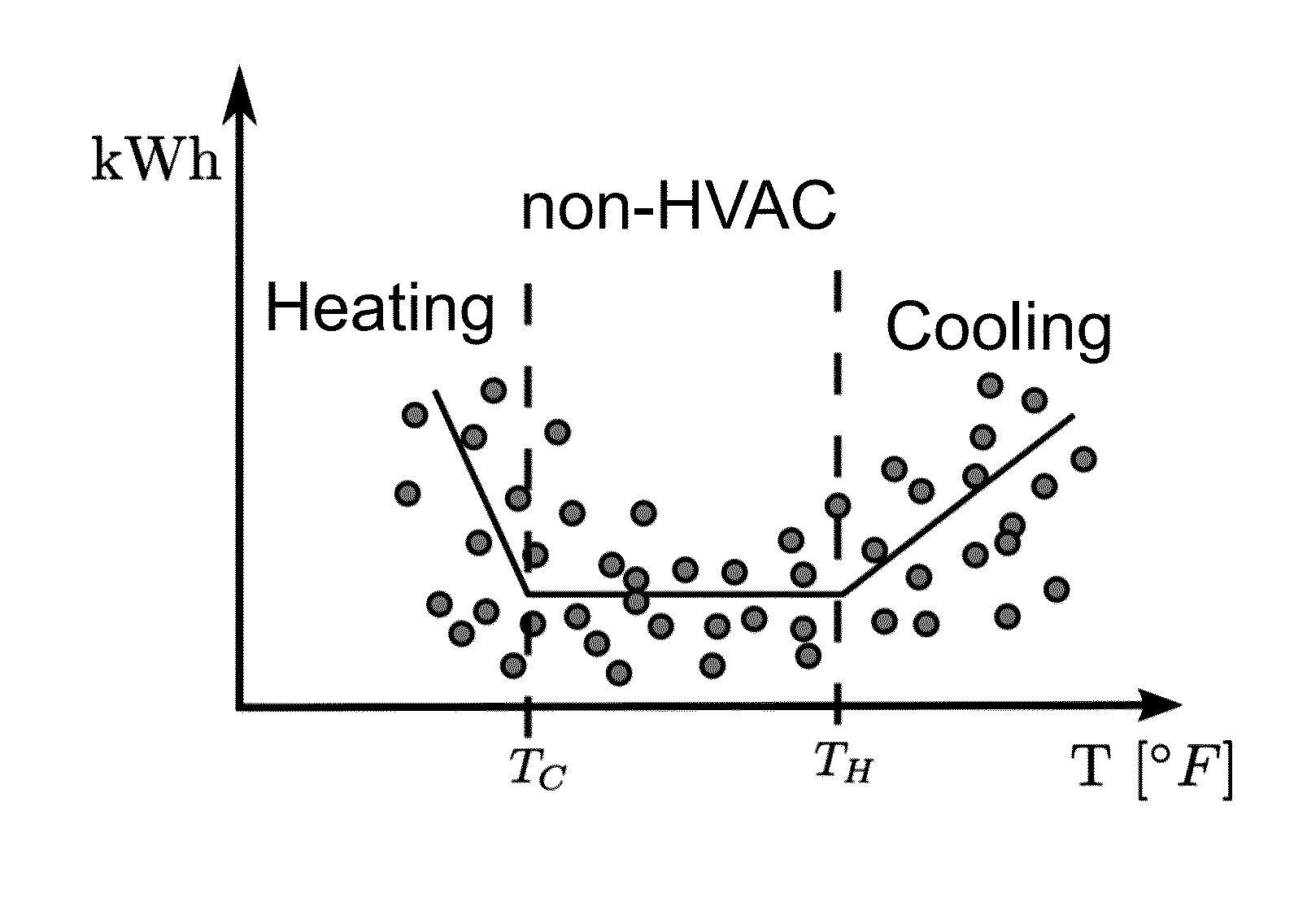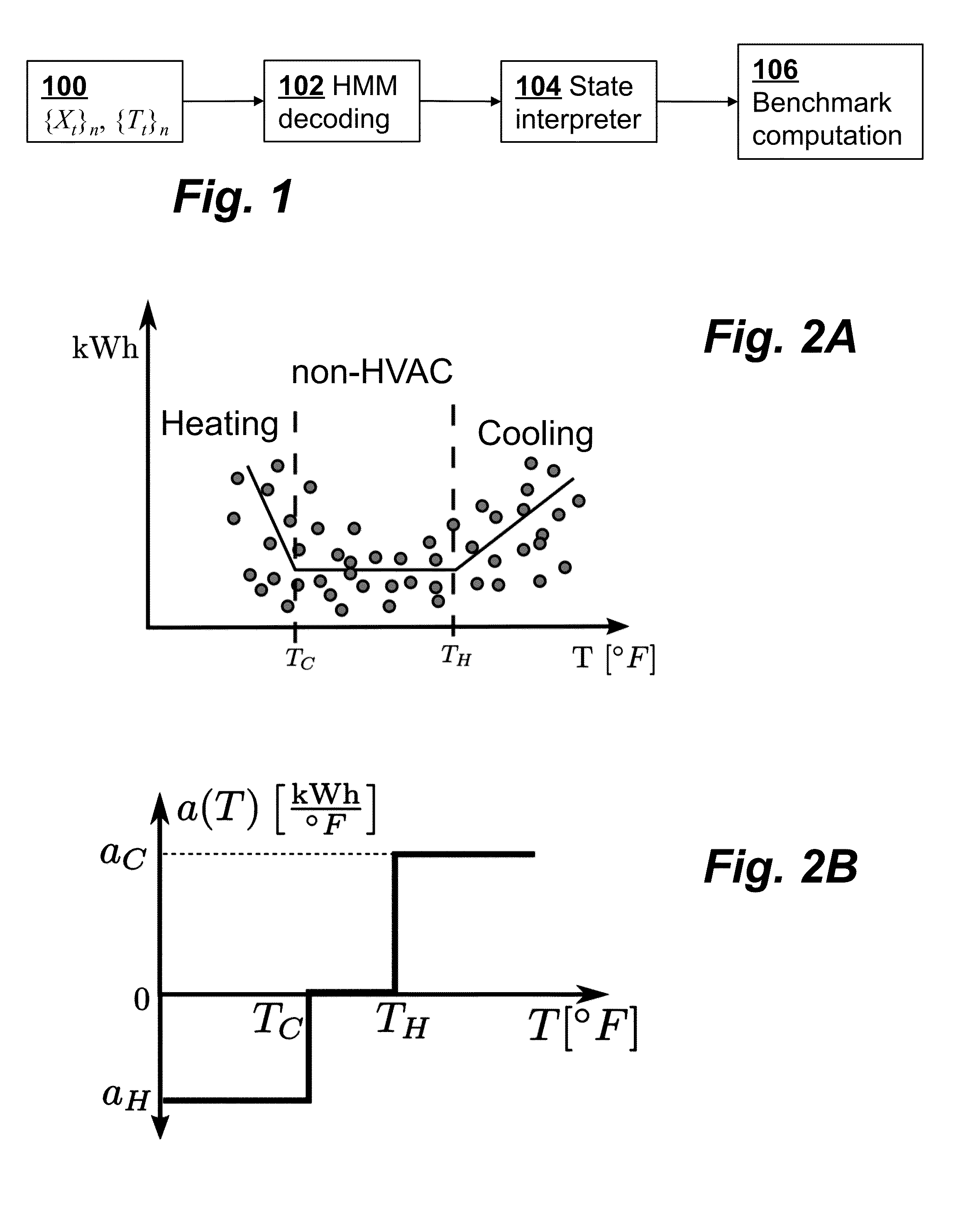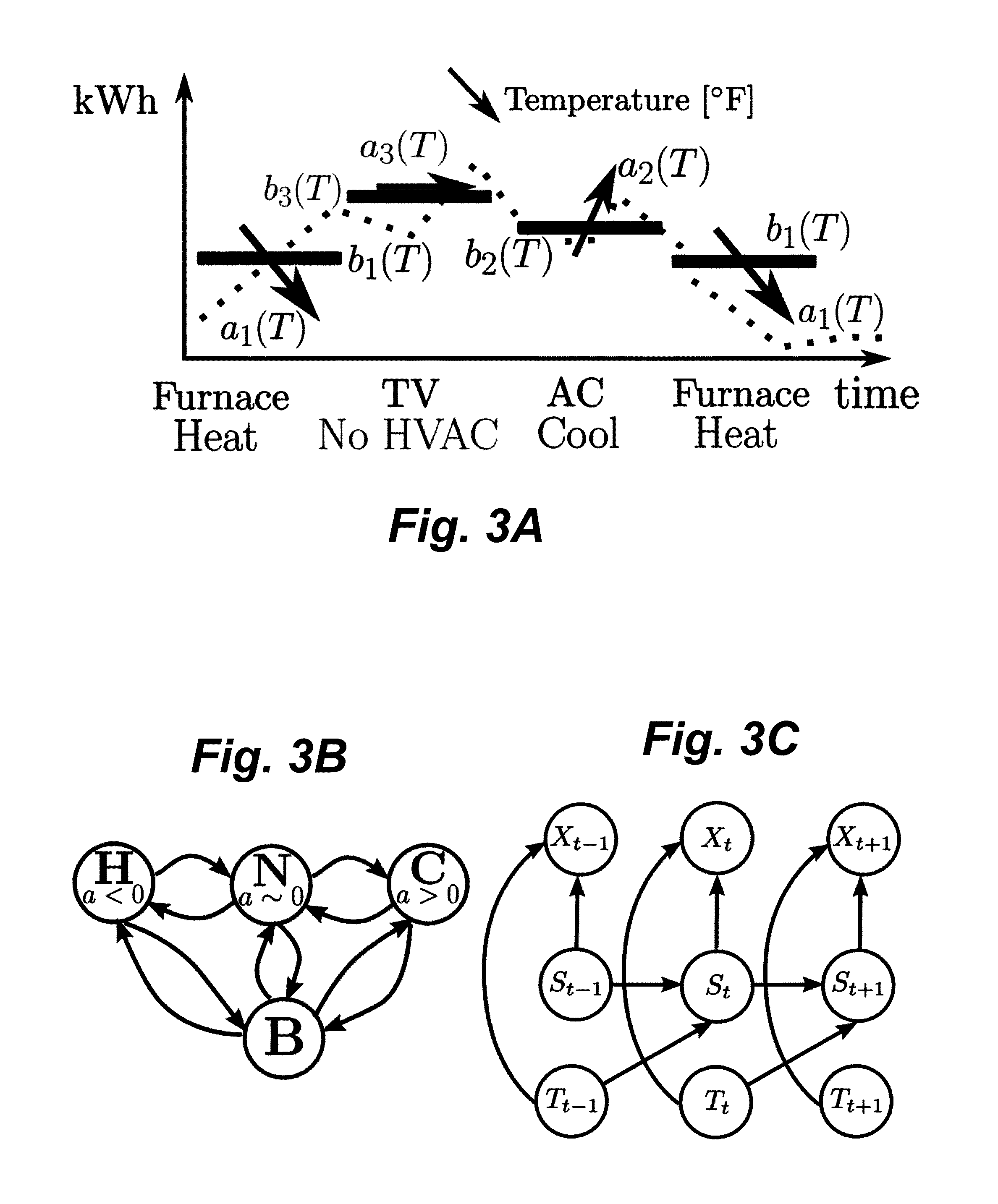Method and system for profiling and scheduling of thermal residential energy use for demand-side management programs
a technology for demand-side management and thermal residential energy, applied in data processing applications, instruments, computing, etc., can solve the problem of remaining a challenge in extracting useful information from this wealth of data
- Summary
- Abstract
- Description
- Claims
- Application Information
AI Technical Summary
Benefits of technology
Problems solved by technology
Method used
Image
Examples
Embodiment Construction
[0047]The techniques of the present invention are motivated by certain types of Demand-Response (DR) designed to reduce loads associated with heating or cooling of a residential premise. Air conditioning and space heating are good targets for tailored DR events, since 1) they make up for a sizable component of electricity use in the U.S. (around 25% of total electricity consumption), and 2) are generally deferrable in time, since the thermal mass of the premise may act as “thermal battery”. Affecting the thermally-sensitive load may be typically achieved through direct load control of the HVAC system (e.g., load curtailment or automatic adjustment of the thermostat setpoint), through adjustable rates (e.g., critical peak pricing), or through incentive schemes. Therefore, it is of interest to understand how much of the energy consumed by each residential customer may be attributed to the operation of temperature-sensitive appliances, and how much is determined by other activities.
[00...
PUM
 Login to View More
Login to View More Abstract
Description
Claims
Application Information
 Login to View More
Login to View More - R&D
- Intellectual Property
- Life Sciences
- Materials
- Tech Scout
- Unparalleled Data Quality
- Higher Quality Content
- 60% Fewer Hallucinations
Browse by: Latest US Patents, China's latest patents, Technical Efficacy Thesaurus, Application Domain, Technology Topic, Popular Technical Reports.
© 2025 PatSnap. All rights reserved.Legal|Privacy policy|Modern Slavery Act Transparency Statement|Sitemap|About US| Contact US: help@patsnap.com



